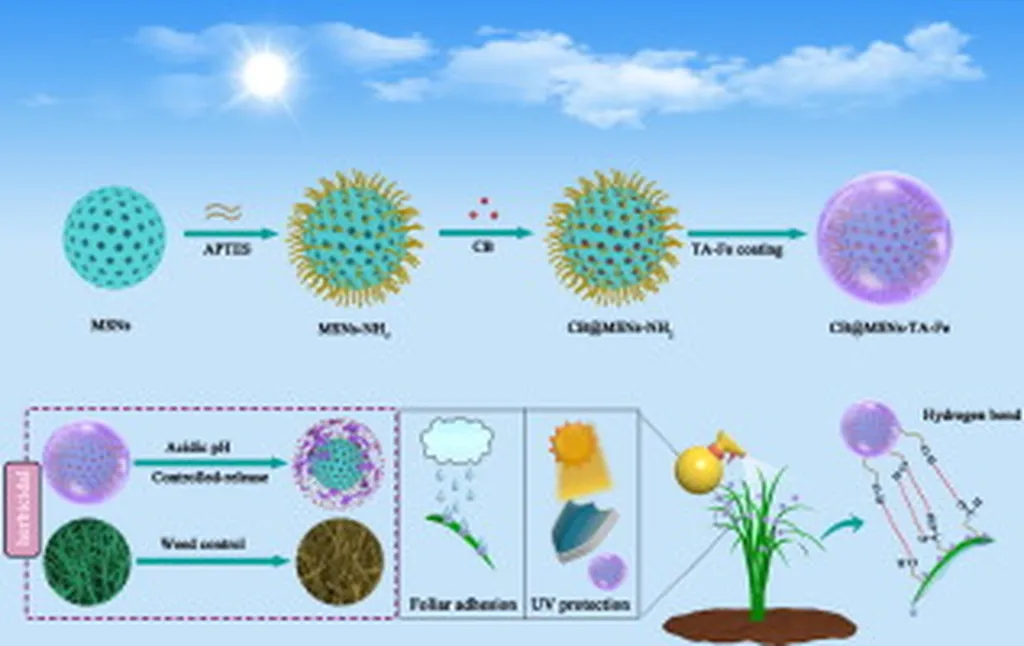In the heart of China, researchers have been cooking up a storm, not in a kitchen, but in a lab, and their latest creation could revolutionize the way we think about herbicides. Dr. Dongdong Li, a scientist at the Longping Branch of Hunan University and the Yuelushan Laboratory, along with his team, has developed a novel herbicide nanoformulation that sticks to leaves like glue and shrugs off the sun’s harmful UV rays. This isn’t just a small step for agriculture; it’s a giant leap towards sustainable farming.
The team’s creation, named CB@MSNs-TA-Fe, is a mouthful to pronounce but a game-changer in the making. It’s designed to enhance the efficacy of cyhalofop-butyl, a common herbicide, by improving its adhesion to leaves and protecting it from UV degradation. “The idea was to create a formulation that would stick to the leaves, reducing the amount of herbicide needed and minimizing environmental impact,” Li explained. And stick it does. The nanoformulation’s rough outer surface and unique core-shell structure give it an impressive foliar adhesion, reducing the risk of wash-off by rainfall.
But what truly sets CB@MSNs-TA-Fe apart is its anti-UV property. Under UV irradiation, the half-life of the herbicide within the nanoformulation is 12.4 times higher than that of the conventional technical herbicide. This means it stays effective for longer, reducing the need for frequent applications. “This is a significant improvement,” Li said, “as it addresses one of the major challenges in herbicide application – UV degradation.”
The implications for the agricultural sector are substantial. With enhanced adhesion and UV resistance, farmers could see improved herbicidal efficacy, leading to better crop yields and reduced costs. Moreover, the reduced need for frequent applications could minimize environmental contamination and potential health hazards, paving the way for more sustainable agricultural practices.
The team’s research, published in the Journal of Advanced Research (known in English as the Journal of Advanced Research), also highlights the biosafety of the nanoformulation. The TA-Fe-coated nano-carrier showed excellent biosafety on rice, zebrafish, and earthworms, indicating its potential for safe use in various agricultural settings.
This research could shape future developments in the field of agrochemicals, inspiring the creation of more efficient, sustainable, and safe formulations. As we grapple with the challenges of feeding a growing population while protecting our environment, innovations like CB@MSNs-TA-Fe offer a glimmer of hope. They remind us that with a bit of creativity and a lot of science, we can find solutions that benefit both our farms and our planet.
In the words of Dr. Li, “This is just the beginning. There’s so much more we can do to make agriculture more sustainable and efficient.” And with researchers like him leading the way, the future of farming looks brighter than ever.

